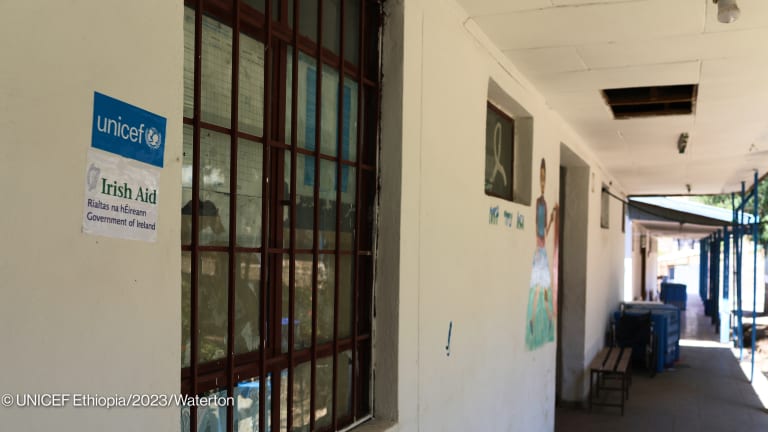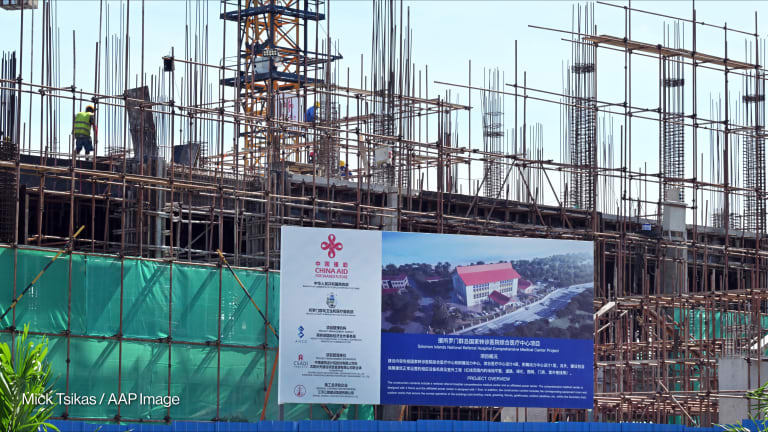Japanese aid: A primer
Japan spent $17.6 billion in official development assistance in 2021. We looked into how the money was distributed.
Japan is one of the largest funders of aid in the world, and the largest donor in Asia. Last year, according to preliminary data provided by the Organisation for Economic Co-operation and Development, it provided more official development assistance, or ODA, than any country, excluding the United States and Germany — a total of $17.5 billion on a grant-equivalent basis, or 0.39% of its gross national income. Japanese ODA as a percentage of GNI has been steadily increasing, from 0.29% in 2019, to 0.31% in 2020, to 0.34% in 2021, partly as a result of increased spending on the COVID-19 response. Japan began providing ODA in 1954, and over the last decade or more, its ODA rationale has been guided by its Official Development Assistance Charter. The main objective is to contribute to the peace and development of the international community which will, in turn, help ensure Japan’s own security and prosperity. The key priorities mentioned in the charter include: poverty reduction, sustainable growth, addressing global issues, and peace building. Crucially, Japan provides aid in a very different way to most other major economies. Around 68% of its funding in 2021 was in loans, compared to 9% for the average member of OECD’s Development Assistance Committee. The data used in this article is extracted from multiple sources, including OECD’s co-operation profiles and statistics portal, Donor Tracker, Japan International Cooperation Agency, or JICA, and the Ministry of Foreign Affairs of Japan, or MOFA. Devex used the most recent figures available, which vary from 2023 to 2021. Year-on-year data in this article should be viewed through the prism of shifting exchange rates. Japan substantially increased its ODA in Japanese yen in 2022, but a sharp fall in the rate of the yen against the U.S. dollar means that Japan’s total ODA, as recorded by OECD, actually reduced. How the money flows Japan’s ODA budget is primarily assessed by the Ministry of Finance. The ministry handles most of Japan’s total gross ODA, most of which is distributed by JICA. Almost all of the remainder is spent by the Ministry of Foreign Affairs. In 2023, for example, according to data provided by Donor Tracker, the Ministry of Finance will handle $16.9 billion of the total gross ODA budget — roughly 81% — of which $14.4 billion, will be passed on to JICA. Another $3.8 billion of the total gross ODA will be managed by MOFA. According to the 2022 preliminary data by OECD, Japan gave out $5.6 billion in grants while $8.9 billion in grant equivalents of loans were distributed. In 2021, Japan distributed 68% of its bilateral ODA budget in loans. The majority of these loans were allocated to the infrastructure sector. According to data from Donor Tracker, $5.9 billion — or 33% of Japan’s bilateral ODA — went to the infrastructure sector alone. Loans offered to this sector are typically given long grace periods and low interest rates. The Ministry of Foreign Affairs uses its share of the funding for grant assistance and technical cooperation agreements. This also includes bilateral funding and multilateral funding. JICA has three main funding streams: technical cooperation, finance and investment cooperation, and grants. Technical cooperation mainly focuses on sending Japanese experts to assist in social and economic development projects in low- and middle-income countries. Finance and investment cooperation focuses on ODA loans that will be used for infrastructure projects and private sector activity support. Meanwhile, grants are used for low-income countries which also include infrastructure projects, with a focus on hospitals, roads, and water supply networks. Any procurement related to technical cooperation and grants are channeled through the Japan International Cooperation System, or JICS. The agency is responsible for facilitating procurement procedures. Bilateral and multilateral aid According to Donor Tracker’s predictions, Japan is expected to spend around $3 billion on multilateral aid in 2023, and $17.9 billion total gross ODA on bilateral aid. Japan’s multilateral aid is funneled primarily to the United Nations, UNICEF, and the United Nations Development Programme. Japan has also made contributions to the World Bank. Japan ranks as the third-largest DAC member country donor of bilateral aid. According to the preliminary report of the OECD, Japan spent $17.5 billion on ODA in 2022. Since Japan’s bilateral ODA is primarily managed by JICA, the agency has developed a fifth medium-term plan for 2022-2026. This serves as the basis for where it will prioritize the country’s bilateral ODA funding and how it plans to approach the priorities. In JICA’s fifth medium-term plan for 2022-2026, it is addressed that they will be focusing on poverty eradication through growth, securing a peaceful and just society, and building a resilient international community. The plan has four focus areas: • Realize a free and open Indo-Pacific. • Cultivate future leaders. • Strengthen initiatives for climate change. • Contribute to revitalizing Japan’s economy and society. JICA’s approach to these focus areas include promoting development cooperation, enhancing development impacts through different partnerships, promoting gender equality, and promoting digital transformation. Japan’s regional and sectoral priorities In 2021, according to the data from the OECD statistics portal, Japan spent $11.6 billion on low- and middle-income countries in total, $2.2 billion of which is labeled as “Developing countries total, unspecified.” Asia and Africa were among the top priority regions for bilateral spending. $6.3 billion was spent on Asia and $1.98 billion was spent on Africa. This is a reflection of Japan’s regional priorities as stated in their Official Development Assistance Charter. $2.2 billion went to unspecified low- and middle-income countries. $617.9 million was allocated to the Oceania region, $477.8 million to the Americas, and $9.2 million toward Europe. Around 83.8% — or $7.45 billion of Japan’s bilateral net ODA went to 10 countries in 2021. India got the biggest share with $2.4 billion. This is followed by Bangladesh with $1.95 billion. The Philippines got $732.9 million, followed by Cambodia with $459 million, and then Myanmar with $404.4 million. Uzbekistan received $348.4 million, Papua New Guinea received $345.7 million, Iraq received $288.1 million, Mauritius received $286.8 million, and Brazil received $247 million. The rest of the countries received a total of $1.4 billion. India has been a recipient of a multitude of projects mainly focused on the infrastructure sector. Currently, there are 37 projects related to the transportation sector in India under Japanese ODA agreements. One of the notable projects is the Chennai Metro Project that aims to increase the mobility of the population in India. Bangladesh has also been a constant when it comes to Japanese bilateral aid. In 2020, Bangladesh received almost $2 billion in Japanese bilateral ODA. The Philippines has seen a steady increase in Japanese bilateral ODA since 2019. The Philippines received $495.4 million in 2019, $626.2 million in 2020, and $732.9 million in 2021. Japan has spent a total of $2.3 billion net ODA on social infrastructure and services alone; $1 billion of which is focused on just health. This was followed by multisector/cross-cutting projects with $1.1 billion, and $801.3 million went to unspecified sectors. Economic infrastructure received $581.8 million, production sector received $386.8 million, humanitarian aid sector received $495 million, and commodity aid with $76.1 million. It is no surprise that Japanese ODA funding in 2021 was focused on the health sector, with particular inclination toward COVID-19-related aid. It was this driving force that allowed them to increase their bilateral ODA funding. Try out Devex Pro Funding today with a free five-day trial, and explore funding opportunities from over 850 sources in addition to our analysis and news content.
Japan is one of the largest funders of aid in the world, and the largest donor in Asia.
Last year, according to preliminary data provided by the Organisation for Economic Co-operation and Development, it provided more official development assistance, or ODA, than any country, excluding the United States and Germany — a total of $17.5 billion on a grant-equivalent basis, or 0.39% of its gross national income.
Japanese ODA as a percentage of GNI has been steadily increasing, from 0.29% in 2019, to 0.31% in 2020, to 0.34% in 2021, partly as a result of increased spending on the COVID-19 response.
This story is forDevex Promembers
Unlock this story now with a 15-day free trial of Devex Pro.
With a Devex Pro subscription you'll get access to deeper analysis and exclusive insights from our reporters and analysts.
Start my free trialRequest a group subscription Printing articles to share with others is a breach of our terms and conditions and copyright policy. Please use the sharing options on the left side of the article. Devex Pro members may share up to 10 articles per month using the Pro share tool ( ).
Alecsondra Si is a Junior Development Analyst at Devex. She analyzes funding data from bilateral and multilateral agencies, foundations, and other public and private donors to produce content for Devex Pro and Pro Funding readers. She has a bachelor’s degree in International Studies - major in European Studies from De La Salle University, Manila, Philippines.








